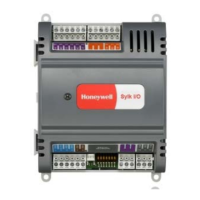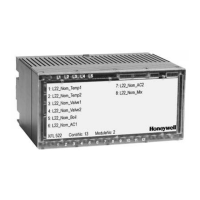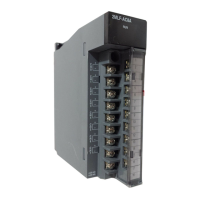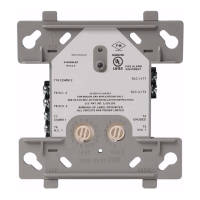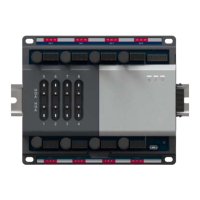7. Series 8 I/O Operations
7.8. Sequence of Events Scenarios
R500 Series 8 I/O User's Guide 219
April 2017 Honeywell
Action: State change detected at A.
Result: The time stamp is stored.
Action: At B, the state change is detected before the DEBOUNCE counter reaches the
target.
Result: The DEBOUNCE counter is set to 0.
Action: At C, state change is detected before the DEBOUNCE counter reaches the
target.
Result: The DEBOUNCE counter is set to 0.
Action: At D, state change is detected before DEBOUNCE counter reaches the target
Result: The DEBOUNCE counter is set to 0.
Action: At E, state change is detected before the DEBOUNCE counter reaches the
target
Result: The DEBOUNCE counter is set to 0
Action: At F, the state is the same as it was at 4msec back
Result: DEBOUNCE counter is incremented and it is now 4. The DEBOUNCE counter
is equal to the target value (=4msec) and the state is same as that when the time
stamp was stored, an Event with time stamp stored at A will be posted
Sequence of Events input chatter scenario
Note: In the above scenario if the DEBOUNCE is set 0, SoeEvt event is reported at every
state the change is detected. With reference to the above figure, state change events are
reported at, 3, 5, 6, and 8 msec on the time scale given. However, with the DEBOUCE
set to 4, there is only one event reported at point F.
PVCHGDLY scenarios
The PVCHGDLY parameter filters the events which are not required by not reporting the
events logged when the timer is active. It is specified in 1 second increments in the range
of 0 to 60 seconds.
The below figure illustrates how PVCHGDLY filters nuisance event reporting.

